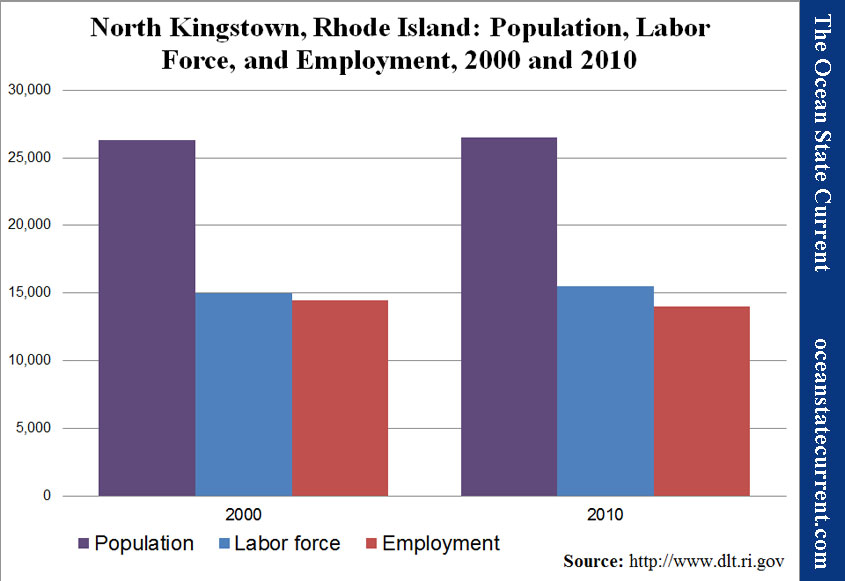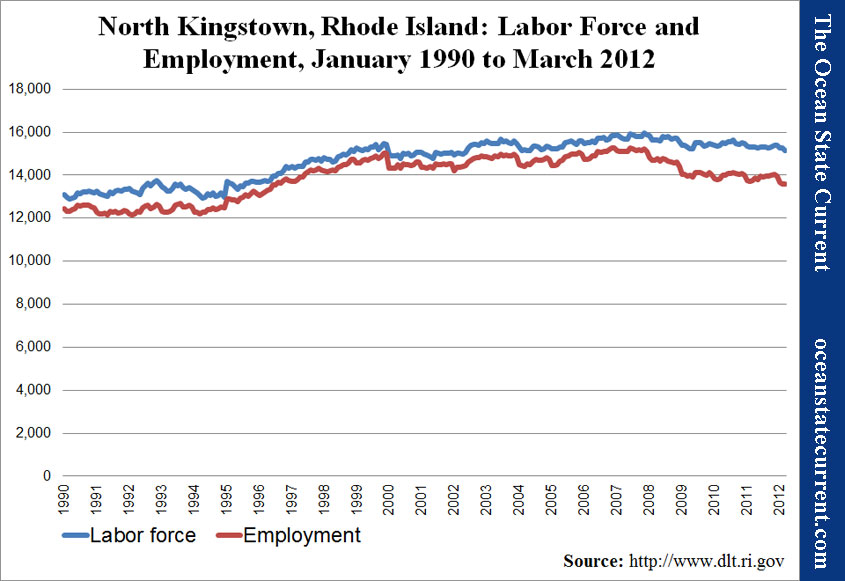State in Decline, Employment in RI Cities and Towns: North Kingstown
North Kingstown’s not-seasonally-adjusted unemployment rate of 10.3% was lower than the state’s overall 11.8%, in March. However, the reason may have more to do with the town’s lack of growth over the past two decades than strong employment, there. The number of employed residents in the town is lower than it’s ever been, in twenty-two years of Dept. of Labor and Training data.
The population hardly moved (0.6%) from the 2000 U.S. Census to the 2010 survey, and at 3.5%, the labor force grew less than the state average. Meanwhile, the number of employed residents fell 3.2%, which is more than in the average Rhode Island town.
As the following graph shows, North Kingstown didn’t see a tremendous boost from the housing boom, but when the economy soured in 2008, its labor force receded, and its employment fell even more. Since then, both measures have drifted downward, slightly, with employment leading the way.
Unemployment is represented as the gap between the lines.
Note on the Data
The population data above comes from the U.S. Census conducted every ten years and is therefore generally considered reliable, to the extent that is used as reference for various government programs and voter districting.
The labor force and unemployment data, however, derives from the New England City and Town Areas (NECTAS) segment of the Local Area Unemployment Statistics (LAUS) of the federal Bureau of Labor Statistics (BLS). A detailed summary of the methodology is not readily available, but in basic terms, it is a model based on and benchmarked to several public surveys. It can be assumed that the sample rate (i.e., the number of people actually surveyed) in each Rhode Island town is very small (averaging roughly 30 people per municipality).
The trends shown, it must be emphasized, are most appropriately seen as trends in the model that generally relate to what’s actually happening among the population but are not an immediate reflection of it. Taking action on the assumption that the exact number of employed or unemployed residents shown corresponds directly to real people in a town would vest much too much confidence in the model’s accuracy.
Be that as it may, the data has been collected and published, and taken a town at a time, it is relatively easy to digest. So, curiosity leads the Current to see it as the best available data to deepen our understanding of trends within Rhode Island. If the findings comport with readers’ sense of how the towns relate to each other, perhaps lessons regarding local and statewide policies may be drawn. If not, then the lesson will be on the limitations of data in our era of information overload.




